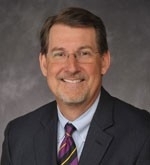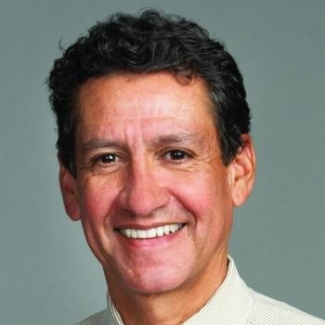Low patient volume and high cost make organ transplant programs difficult to sustain, forcing many hospitals to shutter their programs for both children and adults. But while others struggle to make their programs a success, Lucile Packard Children’s Hospital Stanford has emerged as a leader in the field.

The 302-bed hospital, based in Palo Alto, California, leads the nation in pediatric organ transplantation, Dennis Lund, M.D., (pictured right), the hospital’s chief medical officer, told FierceHealthcare during an exclusive interview.
In the last five years the hospital has performed the most transplants total with a record 91 children receiving organ transplants in 2014. But in addition to the volume, the hospital program also boasts impressive results:
- Its kidney transplant program outcomes exceed the national average with one- and three-year patient survival rates at 100 percent
- It has the best three-year outcomes for liver transplants in the U.S., according to 2015 data from the Scientific Registry of Transplant Recipients
- It is number 1 in heart transplant volume in California with 20 heart transplants performed in 2015, and 11 ventricular assist devices implanted to extend patients’ lives until a donor heart becomes available
What sets it apart
The program’s growth and success stems from evolving technologies and the leadership of skilled surgeons, according to Lund.
Lucile Packard’s program, Lund says, is unique because of its accessibility to both talented specialists who can perform the procedures and the few patients who need such treatment. The hospital serves patients beyond California, with clinics across the western U.S. Despite the large base--about 35 million patients, Lund said the number of needed pediatric transplants is still small, about 50 liver transplants, for instance, are performed each year. Even at that volume, Lucile Packard has the largest pediatric liver transplantation program in the country.
“Children’s hospitals in the U.S. that have transplant programs don’t do a huge number of transplant operations,” Lund said, “and that’s why I think it’s incredibly time and labor and research intensive for children’s hospitals to invest in these programs and build these programs.”
Packard’s program got a boost when Carlos Esquivel, M.D., Ph.D., chief, division of transplantation, and his team relocated to Stanford from San Francisco in 1995. Since then the hospital has been at the forefront of emerging technologies in transplantation.

Esquivel, pictured left, told FierceHealthcare that one of the biggest areas of growth in the past 20 years has been in the ICU, which makes the procedures safer for patients. Operations are also performed in rooms that are safer for the young patients than they were decades ago, Esquivel said.
Because there are few child organ donors available, new ways of splitting livers to perform transplants have also improved patient outcomes for that specific treatment, he says. The shortage of organs for pediatric transplants extends beyond livers, he says, and hospital researchers are also working on ways to engineer organs, using stem cells and other means. And, he notes, researchers with the program have been able to improve patient outcomes through immunosuppression and tailoring treatments specifically to each patients.
That strong dedication to research, Esquivel says, is what helps sustain the transplantation program. “Part of having a successful program is having a strong research program that is parallel to it so that we can make improvements,” he says.
Collaboration with geneticists, other physicians
The hospital’s genetics team, which in tandem with the transplantation procedures offers a wide range of needed care for some of the most vulnerable pediatric patients, is also a key to the program’s success, according to Lund. The geneticists can identify potential metabolic complications for transplant patients, and can pinpoint which patients who have metabolic disorders would be good transplant candidates.
Teams from other parts of the hospital, like oncology, are also regular collaborators with the transplantation doctors. For example, a patient being treated for liver cancer may have a congenital heart defect, and he or she can be treated for both conditions at once. “These are things that aren’t done anywhere else in the U.S.,” Lund says. “We treat these high-risk patients.”
In addition to its success with treatment options, Lund says the program has been successful because of the team’s ability to connect with and support the patients’ families, many of whom travel hundreds of miles for the procedure. The hospital is able to find housing options for family members, many of whom need to stay nearby for months after the procedure, he says.
"You need those kinds of community resources to support those programs,” Lund says.